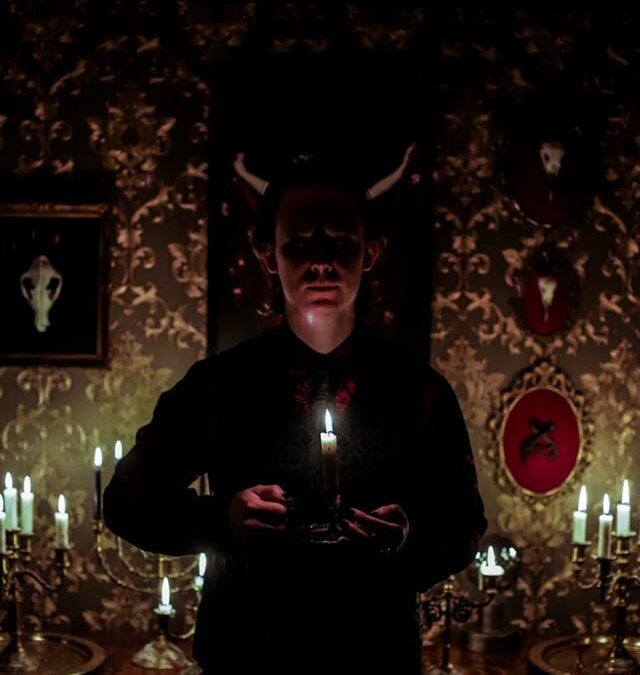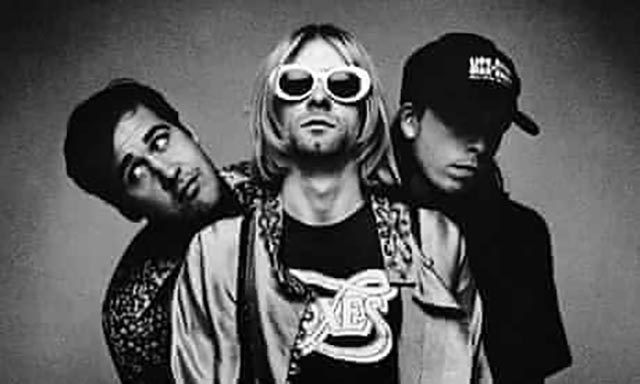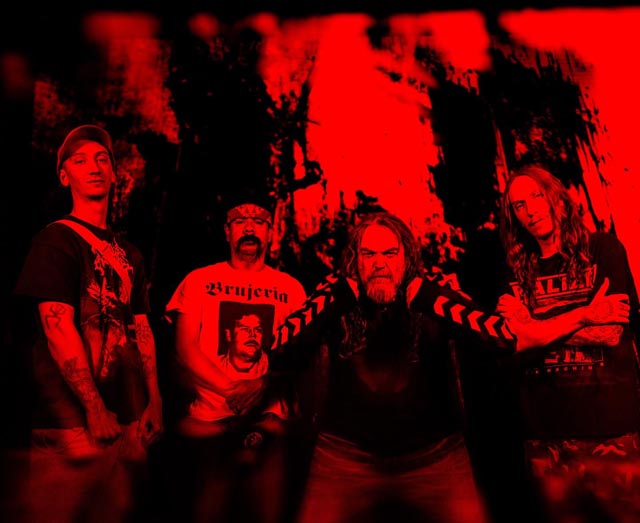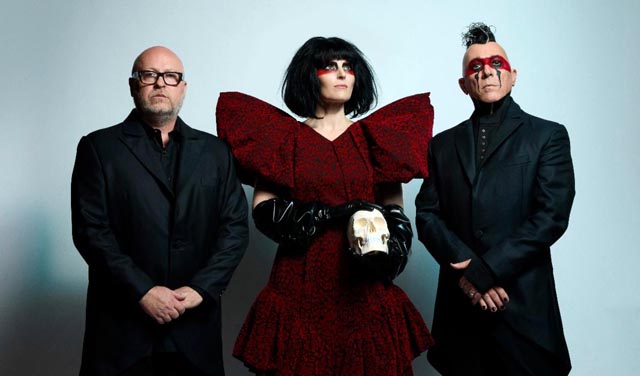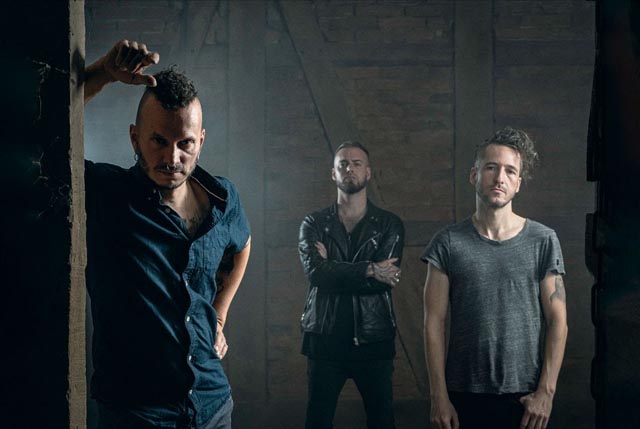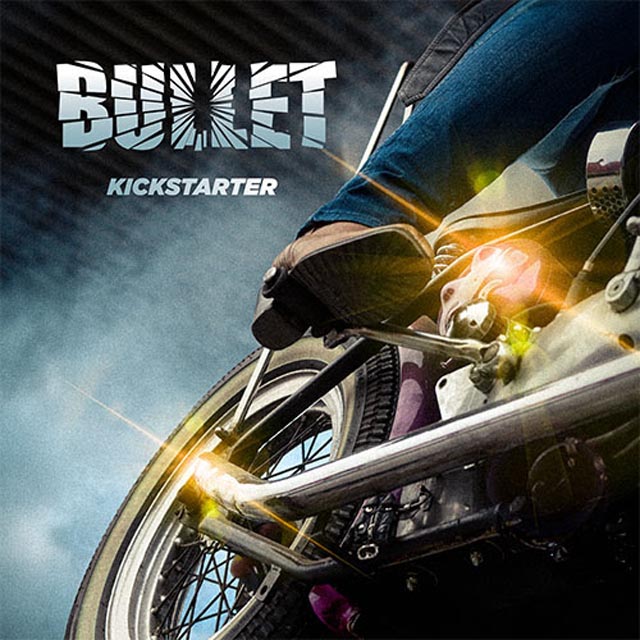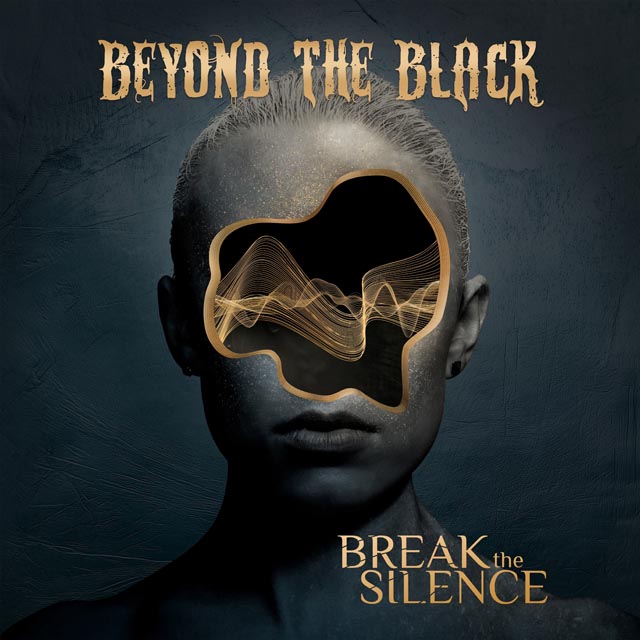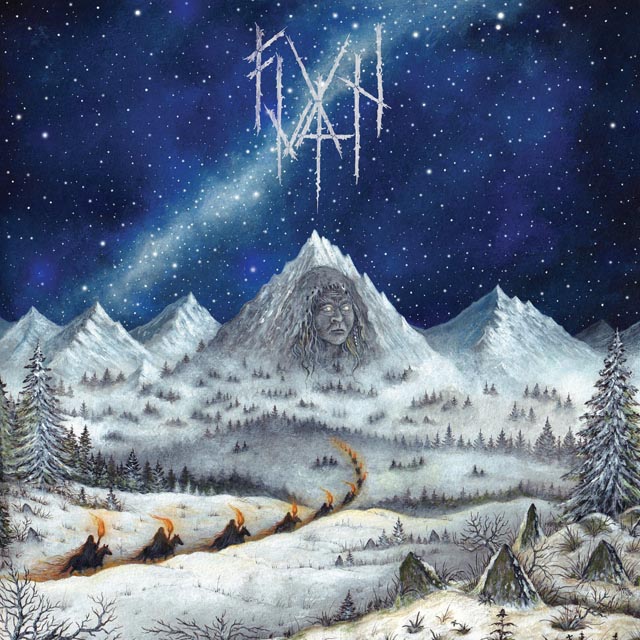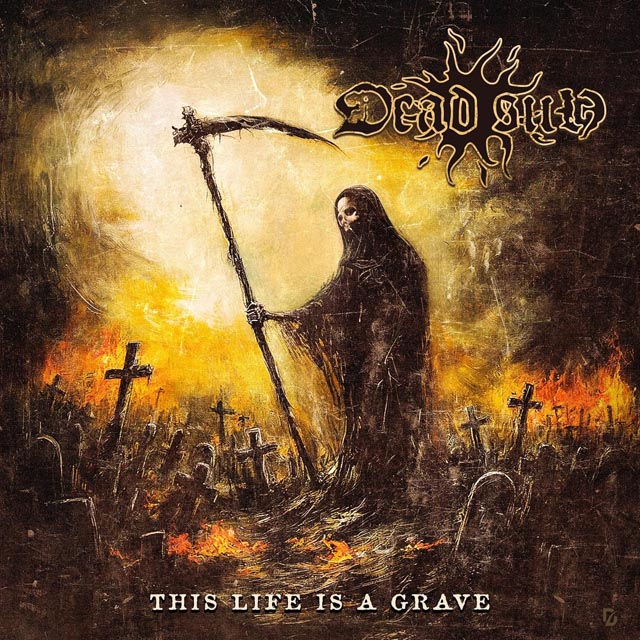Spirit Tomb, the one-man project of Norway’s Leon Kristoffer amazed us last year with his debut EP, The Lotus of Dahlia, and the album Spiritus Lacrimarum: Dolorem in Lacrimas Efundere. Conceived in 2020, Spirit Tomb reflects Leon Kristoffer’s wholly individualistic vision, as thoroughly defined by its fragile beauty as it is crushingly dark. A genius, whose art seems both ahead of its time and also carries the weighty nostalgia and charm of a bygone era, Leon Kristoffer is not defined by trends but forges his own timelessly fashionable path. We currently await The Haunted Palace, the third installment in Spirit Tomb’s ongoing, “Aandegrav Trilogy.”
A cerebral and poetic soul, little is known about Leon Kristoffer, though he has garnered much respect. I would also say that he is one of his country’s finest artists. We wrote to this enigmatic artist, who dwells among the stunning mountains and landscapes of his native region, and he kindly answered our questions with extraordinary eloquence. Please enjoy the result of our written exchange below.
What was the spark that prompted you to found Spirit Tomb in 2020?
It more or less just happened as I was learning a lot of new compositional devices used by the great master Johan Sebastian Bach. These devices blew the gates of creativity wide open, and the flow of creation was immense. Creating is not about merely sitting around and waiting for “inspiration”. Inspiration literally means to take something in, and in order to do that, one has to seek it out. Technique is the tools and vocabulary of the soul, and the more you know, the better you are able to express your innermost everything.
In Spirit Tomb, you combine piano, cello, and vocals. I would love to hear more about your journey with each of these instruments. I know that you began your musical path with the acquisition of your first guitar at the age of 10.
My first instrument was actually a keyboard, gifted to me by my dear-dear grandfather. I was probably around 8-9 years old at that time. I did play around with the keyboard for a while, but it did not really strike me as the most interesting of instruments at that time, and I was much much more drawn towards the guitar. With that said, I always loved the sound of the piano, and its grandiose sound that could be used just about anywhere. It is an instrument that is as versatile as the guitar, in many ways. The piano is an instrument of many voices, and can be just as strong as a leading instrument as an accompanying one.
Singing did not really interest me much until I was around 14-15 years old. This changed when a bandmate from my very first band really opened my ears and eyes towards all these great singers from the 70’s and 80’s. Joe Lynn Turner, Glenn Hughes, Ian Gillan, etc. With this newfound appreciation for the human voice, I started to really develop a strong interest in the voice, and in singing myself. I searched high and low for all these amazing singers from all kinds of genres, and thought to myself that this is something I want to do myself, and that this is something I want to become the best at. It took me a long-long time to get my voice to sound even close to okay, but I never gave up, because I wanted to do it so bad. This is the very same feeling that I still carry within to this very day. It got gradually better, and it turned out great eventually. Then after some years, I found myself stagnating, and I wanted to develop further, so I sought out a vocal coach. This was a game changer, and I am still developing from this teaching 10+ years after I started. I still practice 3-5 days a week, and I want to keep evolving and get better at it, and to learn new styles as well. Last year, I took things even further, by dipping my toes into the waters of classical singing, and I found an amazing teacher in Kristin Starkey, who will actually be a guest singer on the The Haunted Palace album.
The cello is an amazing instrument that translates every note you will ever play on it into a dark beautiful melancholy, with hints of saudadic longing as the blackened cherry on top.
Ever since I saw Metallica’s S&M concert, I was so fascinated with not as much classical music in itself, but the power and emotion that an orchestra could produce, and how heavy metal and classical have a whole lot in common. The big themes, the complex elegance, the raw emotion perfectly blended with technical precision, and that resonated deep within, to say the least. The interest in classical musick came slowly yet steadily over the following years, and is growing stronger each day.
No term accurately describes Spirit Tomb because you have effectively created your own genre. However, I suppose it could be described as dark romantic minimalism. Yet, from that, you craft magical textures and soundscapes that feel extremely lavish. Could you please speak a bit about your alchemical abilities in this regard? It seems that you understand something that most artists don’t — achieving a maximum effect sometimes means working with fewer elements.
Thank you for the compliment! Yeah, it is perhaps not wrong to call Spirit Tomb a genre of its own, but what should we call it?
As for the aforementioned “alchemical abilities”, in one aspect, it is similar to how a painter knows how to blend colours to achieve a certain mood in their painting. These things can of course happen by happy accidents, but why leave it to that when you can discover the method behind achieving the given emotion, so that you are able to repeat the certain shade of emotion? Or even further discover emotion within the emotion? Too many musicians seem to be afraid that knowing what they are doing somehow will diminish the uniqueness of their craft. But that would be like an author being afraid of learning new words, and fearing that doing so would make him less articulate and eloquent. Like knowing more things makes you stupid somehow. I think this could partly be because of some Kantian thinking that really has made way for the talentless warts on the ass of the world to fellate themselves into some constructed grandeur without really expressing something close to genuine, while still having the nerve to criticise skill as something that takes away something from the artist. As far as I see it, having one foot in tradition, and one foot in innovation is the way to go.
There is also the aspect of energy, and how every kind of energy can be used in the writing or performance of any kind of art. For instance, there is beauty and catharsis to be extracted from every bit of hell that the soul vomits up, and to know this and truly experience it to its fullest is something I wish all artists would dare to do. Go as deep as you can, and peel the layers. See what dwells within, and bring it up to the surface.
As for achieving maximum effect; it is not about more or less elements, but that everything serves a purpose, and is there for a reason. The right amount of all ingredients, in other words. If it feels right, then it is right.
What would you like listeners to know about the journey of the “Aandegrav Trilogy” as a whole?
I want the listener to know that this is a raw, stripped naked to the bone journey of an artist that wears his heart on his sleeve, and invites you in to see his innermost heart pulsate with the blood of the human experience, in order to achieve his catharsis.
I want the listeners to fully realize the value of going where it hurts, and to really explore the depths of their own life and psyche, in order to live a fulfilling life in every aspect. In Jungian terms, Spirit Tomb could in many ways work as a shadow integration tool for the listener.
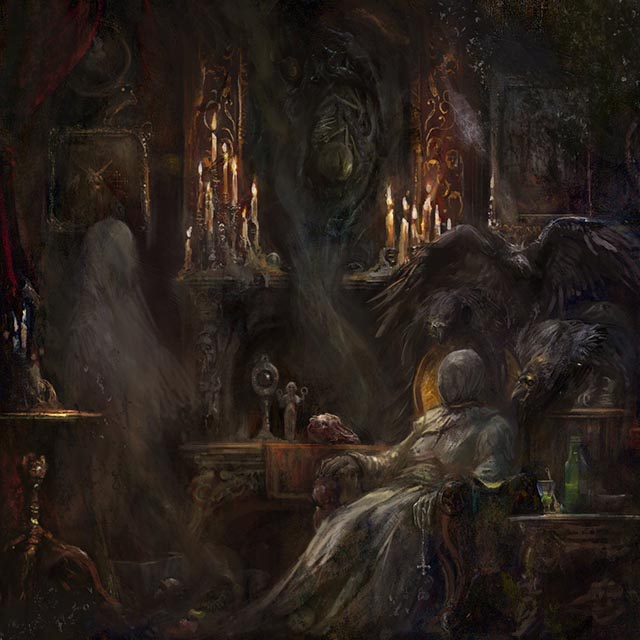
Photo Credit: Mitchell Nolte
What was the biggest challenge that you faced when first embarking upon the Trilogy with The Lotus of Dahlia, which was unleashed on April 14 of last year? Did you already have a clear picture of how the rest of the Trilogy would unfold when crafting that EP?
The EP was made after the Spiritus Lacrimarum album, actually. It was by doing this EP that the idea of this being a trilogy showed up. The nature of the ideas will show you its path, and all you have to do is follow that which is natural. Struggles are usually the result of forcing something into being something that it is not. This is highly intuitive, and can best be described as “if it feels right, then it is right”.
At that point in the process, it dawned on me that the whole concept of Spirit Tomb is where the personal and universal meet in perfect union. The universal aspects of Edgar Allan Poe’s poems, which were put into a sequence to tell a story on Spiritus Lacrimarum, overlapped with my own thoughts, feelings and words. This was the catalyst for the final piece of the trilogy, named The Haunted Palace. This chapter, as well as The Lotus of Dahlia, is a self-biographical poem that gets so personal that it becomes universal.
There really aren’t any “challenges” at all with working on this. It is a labour of love. It is something that I simply have to do. I feel so strongly about all of my creative endeavors that if I could not do it, if I was somehow prevented from doing it, then life would no longer have a meaning for me. This is me, this is my life, this is what I have to do, and I love it.
Please tell our readers what you are holding on the cover of The Lotus of Dahlia!
I am holding an old mirror, while looking at myself. So when you are looking at the cover, you will see a picture of me looking at myself, which is very literal yet abstract way of stating what Spirit Tomb is.
Spiritus Lacrimarum: Dolorem in Lacrimas Efundere is your debut album. It consists of eight carefully chosen poems by Edgar Allan Poe. How did you go about selecting these poems? When did you decide to focus on Poe? Could you imagine yourself taking on more of Poe’s work in the future or perhaps tackling other poets?
The chosen poems are set to a certain sequence that tells a story of loss and longing. In the beginning of the writing process, it was all just instrumental music. I did not really think much about any vocal stuff at all. But when I was more or less finished writing the musick, I felt it needed vocals, and it needed words. Many years prior, I had bought the collected works of Edgar Allan Poe, and had already taken notice of many of the poems as having the potential in them to be put to musick. So I read through them, chose the ones that felt right, noticed a certain pattern, put them in sequence, and there was the story right before my eyes.
As for the future, I can say, wholeheartedly “I don’t know”. We shall see what the future brings. This time around, I have a new and exciting angle to things with making musick that complements my own poems for The Haunted Palace.
The record was officially unveiled last year on August 4th. I know that it was extremely well-received. Could you please speak about the positive reactions from fans and other artists?
There is a small, yet utterly dedicated audience for Spirit Tomb, which I am deeply appreciative of. There is a certain kinship that develops when I know that this means a lot to people. It tells me that we have something in common, and I think that is very beautiful.
Spiritus Lacrimarum actually premiered on August 3rd at Apollon Platebar during Bergen’s Beyond the Gates, the gold standard when it comes to metal festivals. Your listening party was hosted by Finn Håkon Rødland and Otto Egil Sætre. I heard it was a great success! I would love to learn more about the event! What did you and Finn Håkon talk about?
It was a great success, in my opinion. There were only a few people present, but they were truly dedicated, and it felt nice and intimate. All 40 of the special edition CDs and vinyls sold out as well. Finn had prepared great questions not unsimilar to several of the questions I have answered here, actually.
Tell me about Finn Håkon and Otto Egil! I understand that they’re both important people, who are extremely devoted to the Norwegian music scene. Is this true?
Absolutely. These two individuals are as dedicated as they are hard-working, and do A LOT of “behind the scenes” work with all sorts of things. These are the people that make everything that they work on flow, and become as great as it can be. I feel blessed to be able to call these two my friends.
Speaking of Apollon Platebar, Spiritus Lacrimarum was released by Apollon Records and Gymnocal Industries. Could you please tell me about working with those two great labels for the Trilogy?
Apollon is synonymous with quality and integrity. They even do the re-releases of the old Savoy albums, which I think is a very big deal. Gymnocal Industries is Otto’s own label. It is a big part of his heart and soul, and to be given such a warm embrace there is truly heartwarming.
You’re still composing The Haunted Palace. You shared lyrics and a bit of the music with me. They’re absolutely magnificent. Where are you right now in the process of creating that album?
Thank you kindly! At this point, I have around 30 lyrics more or less done, and another 10 or so in the works. I could never imagine that this would expand to such dimensions. I feel there is still a whole lot more to say still.
I am also in dialogue with an absolutely brilliant painter named Kalina Tosheva, so there are a lot of exciting things happening in regards to the artwork, but that is as much as I am willing to reveal at this point.
Filming the movie for The Haunted Palace has also started, and I am, of course, once again working with Nicolai Karlsen for this.
Satan’s spies have informed me that there will be some very special guest appearances on The Haunted Palace. Would you care to comment on who some of those guests might be and/or what function they will serve in bringing your vision to fruition?
I will refrain from mentioning anyone at this particular point, except for the one mentioned in the beginning of the interview, as I do not want it to become an exercise in name-dropping, but I can say that there will be some very fitting guest appearances that are in the league of “I can’t believe that this is happening” category.
The most important thing with the guest appearances is that they serve their correct purpose. They are involved because they fit musickally and thematically, and not at all because of their name, “brand” or status.
With that said, the guest voices will act as something similar to that which is called a psychopomp within my inner journey. I think it will be absolutely beautiful in every way, if I may say so myself.
Could you please take me through your creative process in terms of writing music and lyrics? Does it vary from release to release?
I make notes of things whenever they come to me. This can be words, sentences, melodies and everything in between. I then sit down and revisit these fragments, and I put the pieces where they belong.
When it comes to writing lyricks and poetry, I never question or analyze these things in a way where I “know better” than the material. I will write whatever feels right, regardless of logical understanding. A big thing for me is a kind of wordless intuitive understanding of it. I can have moments where lyricks simply flow out of me in more or less complete form, and I can oftentimes be totally blank about what the hell any of it could mean. And then I deliberately forget about the lyrick for some time, to get some perspective and distance. Then when I get back to it, I often understand exactly what I meant, but could not understand at the time of writing. Sometimes this can even happen years and years after a song has been released as well. To my delight, I still have lyricks written that I am trying to decipher, and figure out what I am trying to tell myself. These are the wonderful gifts of the unconscious, and I treasure them immensely.
When writing musick, it can happen in any way, really. The certain tone and texture of a certain instrument can make a standard chord come to new life in a way that makes one see it from a completely new angle, or it can make me hear a familiar note in a new way, where only a single note can feel like a complete song in its own right, simply based on the particular timbre of the chosen instrument.
Applying techniques from the old masters is also a great tool for really maximizing the full potential of an idea. One example is that if you have 1 melody, you actually have several. You can take that melody and play it backwards, upside down, upside down backwards etc. This can be used to derive new melodies from the prime melody, or to create harmonies to add on top, or anything else you could ever think of.
Who are some of your musical influences in general? I would be particularly interested to know your favorite classical composers. I believe that you love Wagner, Bach, and Mozart.
With classical composers, anything big, grand and dramatically emotional is usually a recipe for success with me. The main inspiration as far as classical influences: I have to say that Schubert, and particularly Winterreise has had a massive impact on me. I have played around with the idea to do my own version of this song cycle, but using the Norwegian translation by Andre Bjerke, instead of just another version in the original German language.
Wagner is an amazing storyteller, and is not afraid to make very long pieces, which is something I deeply appreciate. Bach is of course a genius in his own right, and his compositional devices are some of the greatest tools available for unlimited creative possibilities. Not to mention that his organ works kicks serious ass.
Metallica is definitely the most important band to me. They have continuously shown the world that one band can be everything and anything they want to be, and that nobody can come in and mess with their true authentic selves. My first album was Garage Inc. from 1998. I did not know that this was a cover album at the time, and the impact of the diversity became even bigger because of that. Then my next discovery was the Cunning Stunts concert film. This also further made a massive impact on me in every sense of how a great band should be. And also here the aspect of diversity came largely into play, with the blending of material from their shunned Load and Reload albums with their old classic catalogue. I myself really favour these two records, and they are unbelievably heavy in their own right. Some of the lyrics from songs like “The Thorn Within, “Fixxxer, “Until it Sleeps, ” “The Unforgiven II” “Mama Said” and “The Outlaw Torn” are as deeply profound as could be.
Seigmen is also a band that has been extremely important to me. The aspects that I love about them are actually to a large extent the same as with Metallica. They are utterly unafraid to follow their own voice, and they are totally true to themselves.
In general, I think all artists in any field are at their strongest when they wear their hearts on their sleeve, make zero apologies, and follow the bloodstream of their own heart.
Concerning other styles and genres, I am very fond of most styles, with the exception of reggae. There is something about that sloppy reggae beat that makes me feel a yet unnamed feeling, that resides somewhere between seasickness and irritability.
After all of this time, your vocals are still a mystery to me because you have a truly supernatural dramatic ability. A gift like that can clearly only come from within, but are there any performers that have inspired you to realize your talents?
Thank you so much for the compliment! I try to let my voice be the mirror of my soul, and the story I am trying to tell, and by having an honest unfiltered approach to that, then it is as real as can be.
Any performer that truly means what they do is an inspiration to me, regardless of skill and such. With that said, I do find the expressions to be at their very best when you have the technique in place in a way that your performance isn’t hindered by technical aspects. It does not have to be extensive by any means — it is only so that you aren’t holding yourself and your expression back.
To list a few of my biggest inspirations, I have to say James Hetfield, Axl Rose, Jon Bon Jovi, Bruce Dickinson, Alex Møklebust, Nick Cave, Tom Waits, Maria Solheim, Nina Persson and Ville Valo.
What are your biggest non-musical inspirations? Are there any places that you find particularly inspiring?
Anything is an inspiration if you have your senses open.
I love movies, and I love books. Right now I am reading the old Buffy The Vampire Slayer books by Christopher Golden & Nancy Holder. I absolutely loved that show as a kid, and I still love it now, so to get to read those books that really fill in some of the gaps in the storyline is fantastic. I have also been buying the entire series on VHS, as the old box sets are amazingly beautiful. Luckily, my wife understands! Haha!
As far as movies go, I do of course love horror, yet anything authentic that stirs up something from deep within is of utmost interest. Some faves include The Old Dark House, The House That Jack Built, Melancholia, Hellraiser I & II, Premutos — Lord of the Living Dead, The Legend of Hell House and Stephen King’s IT.
I haven’t really gotten to travel much in my life at all, so I do cherish the special places I have been. Some of my fondest travel memories come from a little island called Ona, which is not too far away from where I live, yet it feels like a world of its own. I vividly recall being there during a heavy storm, all alone at night, sitting in front of a massive panorama window with a guitar in my hand and composing.
I also enjoy old houses, and I can gladly show up when real estate agents are trying to sell old battered houses in my region, just to feel the sense of history and times passed that still linger within the walls. I guess I have an urbex fetish that has yet to be nurtured properly.
Your offerings are all flawlessly produced. The Trilogy features a crystalline sound and extremely intimate feeling. If this makes sense, in my opinion, the cinematic production actually calls attention to itself in the best of ways and becomes like another instrument. You’re, of course, a brilliant engineer and producer. Would you like to tell us about your philosophy and path as an engineer?
Thank you kindly! To not trust any other engineer with my musick has served me well! Fear well spent is gold in its own right.
One aspect of my philosophy of recording is that the soundscapes and sonics are a huge part in telling the story of the musick, and that the production directly weaves itself into the art of storytelling. Hifi, lofi, rough or polished textures — all of these elements, and countless more, are creative tools that are there to use in order to enhance the story you are telling.
With Spirit Tomb, I want the listener to get so close that they are almost residing within my heart and soul while I am performing.
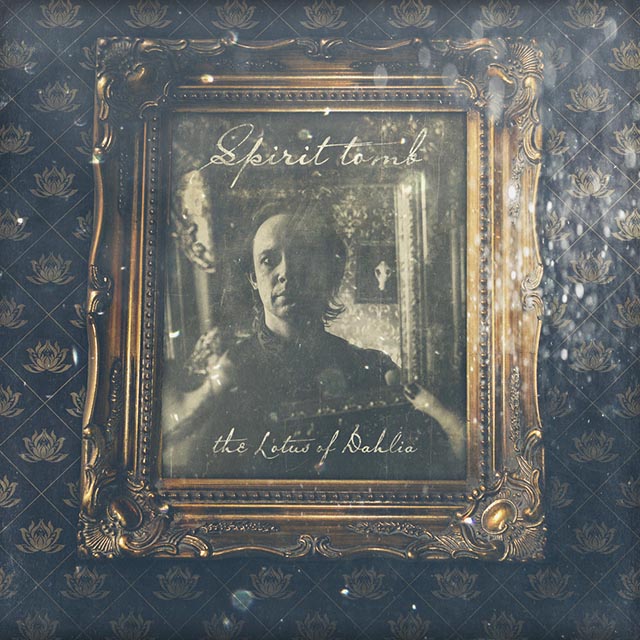
Photo Credit: Nicolai Karlsen
You work with Nicolai Karlsen for both photos and videos. His art is absolutely magnificent! It couldn’t be more stunning. You made a film together for The Lotus of Dahlia, and you’re currently making full-length movies for Spiritus Lacrimarum and The Haunted Palace. Please tell me about collaborating with Nicolai as well as the overall experience of making these films. It seems that you’re a master at brainstorming and refining concepts.
Me and Nicolai go way back. We have been the best of friends since we first met, and he is just the easiest person to work with. He knows and understands his role in the project, he serves my vision by blending it with his keen eye of talent and expertise, and most importantly; he trusts me completely.
These movies are intense to make, to say the least. I go to all the places within and without, where the most beautiful hurt resides, and I let it all out. He captures it. As simple, and as “difficult” as that is. Doing these films gives me a huge sense of satisfaction, and they are beyond cathartic for me to make. I get to tell my most personal story in the most universal way, and that is one of the greatest gifts that art gives the world.
The film for The Lotus of Dahlia was the first time that you tried editing, and you obviously did a fantastic job. What was that like?
That was a great learning experience, and I saw early on that a lot of my knowledge from working with sound was translateable to the video format. It took me something like 40 hours to complete, and that includes learning to use the software well enough, so that I could get it to look exactly how I wanted it to. I also got to test out my skills in building a lighting rig from scratch. I am very pleased with the results.
In addition to Nicolai’s contributions, your releases have also featured some amazing photos by Joacim Jørgensen and equally fabulous art by Mitchell Nolte. How was collaborating with those two great visual artists?
Joacim is an old friend. We have known each other since he moved here as a kid. I believe I was one of the very first friends he made when he moved here. He is also a delight to work with, and is also a person that respects my vision, and lends his experience and expertise to help me fulfill it. This was actually the first time we worked together on such a project.
Mitchell Nolte is pure brilliance. Once again, so easy to work with. He understands the vision, and does his part in bringing it to life.
I think one reason these things run as smoothly as they do is that I hire the artists to do their version of my vision. I do not dictate every minor little thing. They are given complete freedom within the natural limitations of the concept itself, instead of some made-up bullshit limit that has nothing to do with the actual vision. You don’t hire an expert, and then tell him how to do his job.
I’ve never seen such gorgeous and carefully executed physical releases as yours, and I really mean that. Aside from just getting everything absolutely perfect with the art and layouts, you do a lot of special things, including wax seals, incense, talons, etc. I’ve heard that you even wanted to make a Spirit Tomb barley wine to accompany Spiritus Lacrimarum, so hopefully that will happen one day. How do you go about perfecting Spirit Tomb’s physical merch?
Thank you! It is so important to have the physical format as massive as can be. One of the things I really enjoyed in the early 2000’s when downloading really took off, was that it forced bands to really go the extra mile with the physical copy, so that simply became a bonus to us that already bought the albums regardless. I simply carry on in this tradition.
I do think that people have become a bit lazy when it comes to the CD version, and focus only on the vinyl, and then complain that the CD does not really sell that well. How about making the CD just as elaborate as the vinyl, and see what happens? It sure worked for me! Haha!
The Spirit Tomb barley wine was a collaboration between me and David Chiaradia; the man behind BMOD Beer. The Barley wine had its unveiling at “The Beer Experience” festival in Zolder. The brew itself is as close as we could come to something resembling that which could metaphorically be the tears of the spirits, or Spiritus Lacrimarum. It is a Belgian style quadruple infused with honey. It is a limited edition to only about 50 bottles. It did very well at the festival, I am told.
I may or may not have heard rumors that you come from a long line of important composers and musicians, though you’re completely self-made. What I know for sure is that you’re related to the famous sculptor Anders Svor (1864-1929), who has his own museum. How did you cultivate your sense of aesthetics?
There are some very loose ends in regards to the relation of the musician in question, although common sense would deem it to be true. But since it cannot be absolutely confirmed, I choose to not go deeper into that. With that said, there are a lot of loose ends in terms of whom one may or may not be related to in this respect, and in general as well, that would be very interesting to learn more about. My family is very small on both my mother and father’s side, and I am an only child as well.
Yes, Anders Svor was my great-great grandmother’s brother. That is as close as a relation to him can get, as he himself did not have any children. I was somewhat aware of my relation to him as a child, but it did not really hit me properly until the summer of 2023, when I went to visit the museum. I am very proud to be related to such a brilliant man, and if he were alive, I hope he would have been proud of me as well.
Aesthetically, I have for as long as I can remember been drawn towards the masters of the olden days. I love baroque, and the excessive ornamentation of it. I love the posh Victorian era, with all its lavish extravaganza. It makes me feel at home. I feel like more of a “guest” in our modern world and its aesthetics, although I do enjoy certain aspects there too.
As we established, you create even more than a totally cohesive audio-visual experience. Are you at all inspired by the concept of Gesamtkunstwerk?
I was not really aware that it was a concept and that there was a word for it until you said so! But with now having this concept explained to me, I realize that this is exactly what I have been doing here.
One does what is right for the given project. Sometimes it is more, sometimes it is less. It does not matter, as long as it is right for what you want to do, and that everything is expressed in accordance with the nature of the given project.
Can we hope to hear you perform live sometime in the future with Spirit Tomb? There are a lot of exciting possibilities. I can picture you holding concerts at some very posh venues and also at some rather macabre places.
There has been a little bit of discussion around this topic, and there is a certain want and desire to do a live thing, but if it is to happen, then it has to be in the right venue, with the right vibe, for the right kind of setting. I am in the process of trying out something in the rehearsal room soon, actually. We shall see. I will leave it at that for now.
Perhaps this is too far ahead to think, but, if I may ask: What are your plans for after the Trilogy?
As mentioned briefly earlier, perhaps a Norwegian version of Schubert’s Winterreise would be the next thing after the trilogy, but who knows?
Is there anything that we didn’t cover that you’d like to discuss?
Think this should cover most of it, unless you have any further questions?
You’ve given me an incredible interview, Leon! Thank you!
My pleasure, and thank you for having me!
(Purchase Spirit Tomb’s Apollon Records, Gymnocal Industries, or from Bandcamp here and here.)
Feature Image Photo Credit: Nicolai Karlsen

